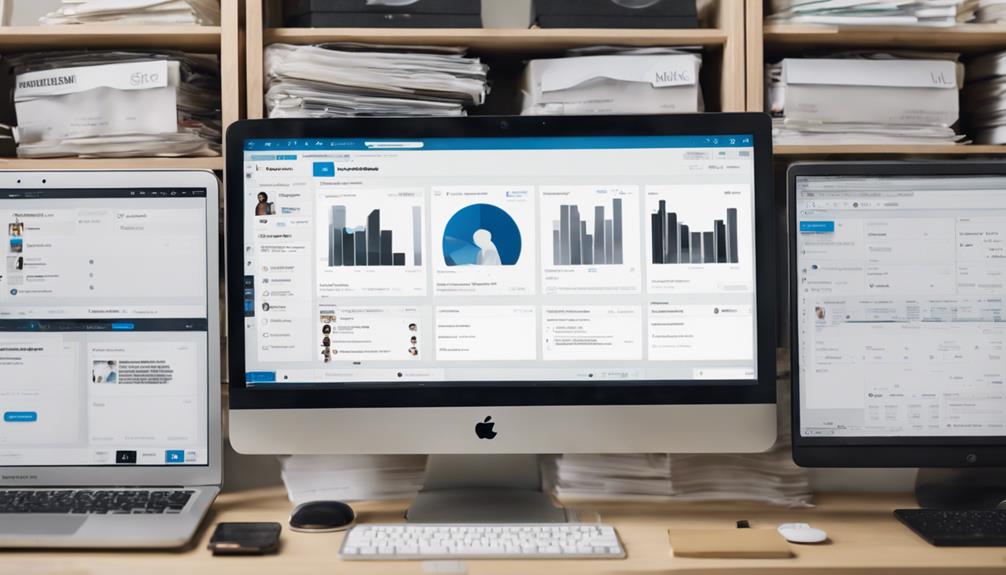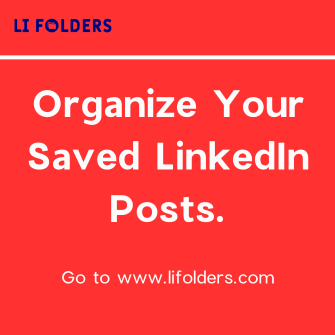
Navigating access levels in LinkedIn Business Manager is based on understanding its two-tiered permission model, which involves highly flexible Business Manager roles such as Admins, view-only Employees, and limited-access Contractors. These roles are structured in tiers to enhance collaboration and security.
As you manage ad accounts and LinkedIn Pages, you'll assign roles like Administrators, Employees, and Contractors, ensuring the right people have the right access. Roles like Admin, Billing Admin, Account Manager, Campaign Manager, Creative Manager, Viewer, Super Administrator, Content Administrator, Content Curator, Analyst, Sponsored Content Poster, Lead Gen Form Manager, and Landing Page Administrator help streamline processes.
Regularly review and update access levels to protect sensitive data. Implement role-based access control following best practices to avoid costly mistakes. Learn how to optimize your workflow and safeguard your assets.
Understanding Business Manager Roles

You'll find three primary roles within LinkedIn's Business Manager: Admin, Employee, and Partner, each with distinct levels of access and responsibility. As you navigate the platform, understanding these roles is crucial to ensure you're granting the right level of access to your team members.
As an Admin, you'll have full control over assets, permissions, and team members. You'll be able to manage everything from campaigns to team dynamics.
Employees, on the other hand, can manage assets and campaigns, but they won't be able to add or remove team members. This role is ideal for team members who need to focus on specific tasks without compromising the overall structure of your Business Manager.
Partners have limited access and are typically external collaborators. This role is perfect for freelancers, agencies, or vendors who need to access specific assets or campaigns.
The beauty of LinkedIn's Business Manager lies in its flexibility – you can adjust roles based on the level of responsibility and access needed. By understanding these roles, you'll be able to grant the right level of access, ensuring your team works efficiently and effectively.
Tiered Permissions Explained
Within LinkedIn Business Manager, you can incorporate a two-tiered permission system, which allows for precise control over user access to Ad Accounts, Pages, and key administrative functions. This tiered system ensures that each team member has the correct level of access required for their work.
Admins, such as Business Manager Admin, enjoy full control over all Business Manager features, from adding or removing users to assigning roles. They're the central authority for user management and overall system control.
Campaign Managers, on the other hand, are empowered to create and manage ad campaigns but hold limited control over account settings and user management. They're well-suited for ensuring successful campaigns but their authority is confined to that realm.
Paid Media Admins, including Sponsored Content Posters, Lead Gen Forms Managers, and Landing Page Managers, have specific roles related to ad campaign management, such as creating Sponsored Content ads, managing lead generation, and creating landing pages.
Lastly, Analysts are granted view-only access to Business Manager data. This allows them to analyze performance without the risk of making unintended changes.
Understanding and assigning these tiered access levels in Business Manager is crucial for enhancing team collaboration and streamlining operations. By doing so, you ensure that each team member can focus on their specific tasks efficiently without needing unnecessary access.
Managing Ad Accounts and Pages

By assigning specific roles to team members, such as Administrators, Employees, and Contractors, you can effectively manage access levels for Ad Accounts and Pages in LinkedIn Business Manager, ensuring efficient workflow and security.
This two-tiered permission model allows you to grant access to the right people for their roles, ensuring that collaboration remains smooth and secure. Assigning appropriate access levels ensures that each team member can perform the tasks required for their job without compromising sensitive information.
For instance, if you add Ad Accounts to Business Manager, you can immediately assign roles to team members, defining their access and actions on those accounts. LinkedIn Business Manager allows you to share Matched Audiences across Ad Accounts, ensuring consistent targeting.
However, you can also remove access when needed, maintaining control over who can make changes or view sensitive information. This flexibility in adjusting access levels helps you manage your Ad Accounts and Pages with precision, ensuring your team works seamlessly within the Business Manager platform.
Assigning Roles to Team Members
Assigning Roles to Team Members in LinkedIn Business Manager
To ensure efficient management and secure access control, assign specific roles to team members in LinkedIn Business Manager, designating their level of access and authority.
Different roles are suited for different responsibilities, such as Admin roles, which provide full control over assets, allowing for effective management.
Advertiser roles are ideal for team members who need to create and manage campaigns.
For team members who only need to view data and analyze performance, Analyst roles are a good fit.
Assign roles through the 'People' tab in Business Manager settings, tailoring each role to the specific responsibilities and access needs of each team member. This targeted role assignment ensures that each person can work efficiently within their designated scope.
Proper role assignment also enhances secure access control, reducing the risk of unauthorized changes or data exposure.
Best Practices for Access Management

Establish your company's role-based access control framework within LinkedIn Business Manager by implementing clear roles tailored to each team member's responsibilities.
This includes designating Admin roles for full control over Business Manager settings, Advertiser roles for campaign management, and Analyst roles for performance data analysis. Clear communication and understanding of these roles are crucial to maintain a smooth workflow within the Business Manager.
Regularly review and update access levels based on team changes, project requirements, or security considerations to maintain data integrity. Implement access controls to protect sensitive data, prevent unauthorized actions, and ensure compliance with company policies and regulations.
This ensures that your organization utilizes LinkedIn ads effectively while safeguarding its assets. Establishing clear roles helps streamline processes and improves overall performance.
External Collaboration in Business Manager
To ensure seamless collaboration with external partners, such as clients, agencies, and freelancers, it's vital to add them to your LinkedIn Business Manager and set clear access levels that align with their roles. Ensure your partners understand the Business Manager basics, as this foundation will help maintain optimal collaboration.
When adding partners to your Business Manager, you can delegate appropriate access levels by sharing IDs in the Partners > Add Partners section. This means only one Business Manager can manage a page or ad account, ensuring security and efficient asset management.
Make sure to assign roles that reflect the partner's responsibilities, avoiding ambiguity and miscommunication.
Smooth collaboration relies on clear delegation. Properly set access levels ensure your external partners can perform their duties without overstepping their bounds.
Take the effort to delegate effectively, and you'll find that your external collaboration within Business Manager runs seamlessly and safely.
Frequently Asked Questions
What Are the Access Levels for Linkedin Business Manager?
LinkedIn Business Manager uses a two-tier permission model that helps each user get the access they need across Business Manager, ad accounts, and LinkedIn Pages.
The first tier of permissions is for the Business Manager role and consists of the following roles:
- Admin: Controls Business Manager and everything added to it, with full control over all aspects.
- Employee: Has view-only access, limited to the Ad Accounts and Pages they've been assigned to.
- Contractor: Similar to Employee but can be used for people who don't work at your organization.
The second tier is for the ad account and Page roles and includes the following roles:
- Ad Account Roles:
- Billing Admin: Can change billing details and receive notifications.
- Account Manager: Can manage account details and user access.
- Campaign Manager: Can create and edit campaigns.
- Creative Manager: Can create and edit creatives.
- Viewer: Can view campaign data.
- Page Roles:
- Page Admin: Has full control over a Page.
- Content Admin: Can manage Page content.
- Curator: Can view content suggestions and analytics.
- Analyst: Can view Page analytics.
- Sponsored Content Poster: Can create Sponsored Content ads.
- Lead Gen Form Manager: Can download leads from Lead Gen Form campaigns.
- Landing Page Admin: Can create and edit landing pages.
These roles ensure that each user gets the precise access they need to perform their tasks efficiently within Business Manager, ad accounts, and Pages.
What Are the Admin Permission Levels in Linkedin?
LinkedIn Business Manager has three primary admin permission levels: Admin, Employee, and Contractor.
Admins have full control over Business Manager and all associated assets.
Employees have view-only access to assigned Ad Accounts and LinkedIn Pages.
Contractors are similar to Employees but are used for external partners or freelancers.
How Do I Manage Permissions on Linkedin?
To manage permissions on LinkedIn effectively, you need to understand the different user roles and their respective access levels. As a Business Manager admin, you can add people to your Business Manager and assign specific roles to manage ad accounts and Pages. You can also share Matched Audiences across ad accounts.
These roles include:
- Admin: Controls Business Manager, ad accounts, and pages.
- Employee: Has view-only access, limited to assigned ad accounts and pages.
- Contractor: Similar to Employee, used for external workers.
- Campaign Manager: Manage ad campaigns and creatives.
- Creative Manager: Create and edit ad creatives.
- Billining Admin: Manage billing information.
- Viewer: View campaign data and ad analytics.
- Sponsored Content Poster: Create sponsored content ads.
- Lead Gen Form Manager: Manage lead forms and access downloaded leads.
- Landing Page Admin: Create and edit landing pages.
- Content Admin: Manage page content and recommendations.
- Curator: View content suggestions and analytics.
- Analyst: Manage page analytics.
Additionally, you can customise roles for your business by combining these tiers flexibly based on your needs.
How Do I Give Access to Linkedin Business Manager?
To give access to LinkedIn Business Manager, add users under the 'People' tab and assign roles accordingly. For Business Manager, you can choose from three roles:
- Administrateur (full control)
- Employé (limited actions)
- Prestataire (contractor with specific access)
Additionally, you can set Tier 2 roles specific to ad accounts and Pages. For ad accounts:
- Administrateur facturation (full control)
- Responsable de compte
- Campaign Manager
- Responsable de la conception
- Observateur (view-only access)
For Pages:
- Super Administrateur (full control)
- Administrateur de contenu
- Éditeur de contenu
- Analyste (view-only access)
- Auteur de Sponsored Content
- Gestionnaire des formulaires Lead Gen
- Administrateur de la page de destination
Assign roles carefully to ensure each person has the right level of access.
Conclusion
You've successfully navigated the world of LinkedIn Business Manager access levels. LinkedIn Business Manager, which uses a two-tiered permission model, allows for granular control over ad accounts and LinkedIn Pages.
By understanding roles, tiered permissions, and best practices, you're now equipped to manage ad accounts, pages, and team members with confidence.
With external collaboration under your belt, you're ready to take your LinkedIn marketing to the next level.






